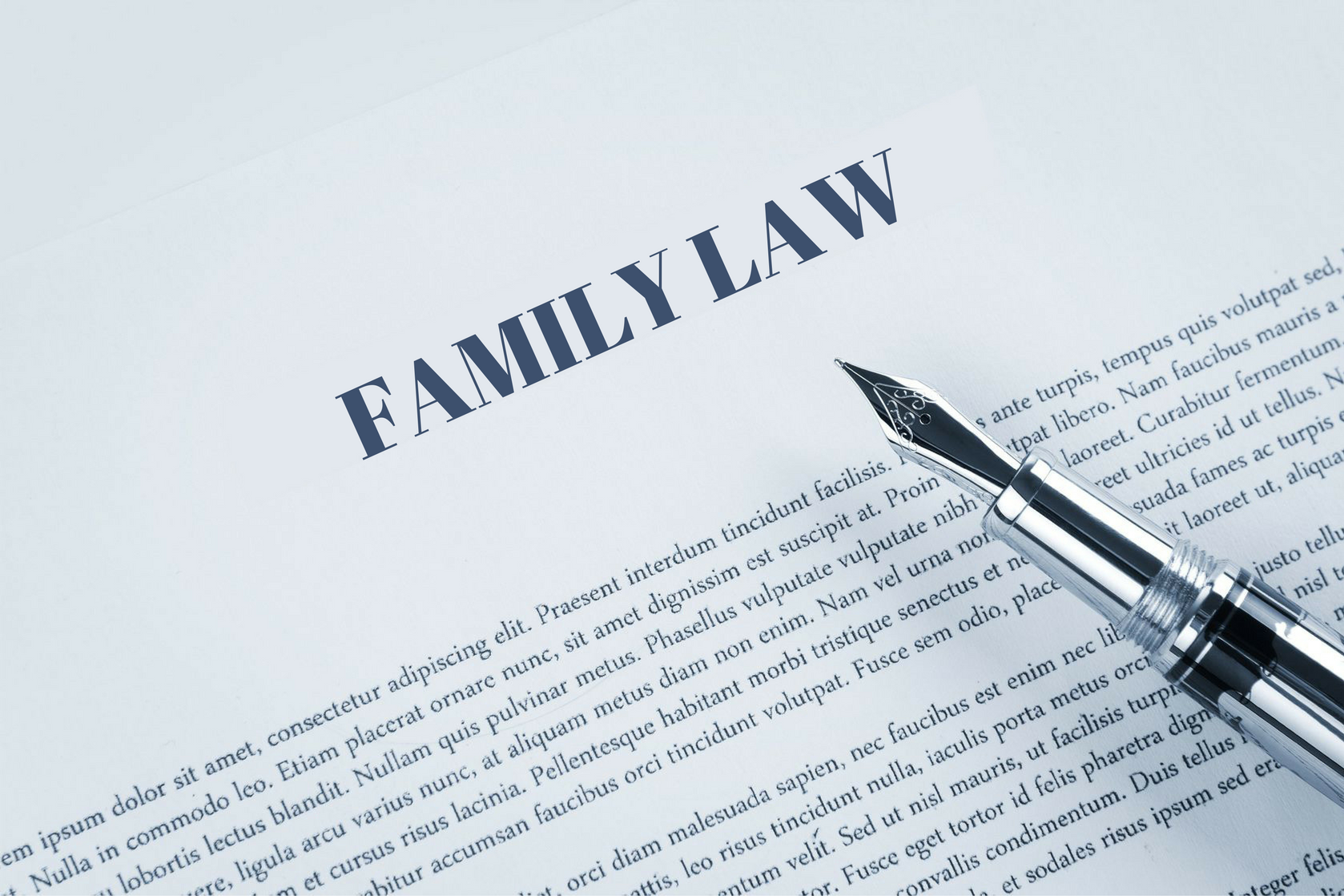(This article is published in the March 2017 Issue of Hong Kong Lawyer. Please click HERE for the online article.)
In matrimonial proceedings, it is quite common that the Family Court orders a husband to pay interim maintenance to his wife and/or children, pending the final determination of the divorce petition. This is what is known as a "maintenance pending suit". If the husband refuses or fails to make payment, whether pursuant to a maintenance pending suit or a maintenance order, the wife can take out a judgment summons seeking an order for the husband to attend Court for oral examination (ie, to answer the questions from the judgment creditor (ie, the wife) and the court in relation to his failure to make payments) and be committed to prison for up to three months.
On 30 December 2016, the Court of Appeal handed down its Judgment (“Judgment”) in the case of YBL v LWC, CACV 244/2015 (“YBL v LWC”). In its Judgment, the Court of Appeal comprehensively reviewed the judgment summons procedure under r. 87 of the Matrimonial Causes Rules (Cap. 179A) and held that certain features of the procedure were incompatible with the Hong Kong Bill of Rights Ordinance (Cap. 383) (the "Ordinance").
The Facts
In YBL v LWC, the husband being the Respondent was ordered to pay interim maintenance to his children in the sum of HK$20,000 per month (“MPS Order”). The order was made on 21 June 2013. He stopped making payments in September 2013. He applied for an order to set aside the maintenance pending suit. His application was dismissed on 4 March 2014.
On 13 August 2014, the wife issued a judgment summons, which the Court heard on 26 October 2015. After hearing the husband’s evidence on oath, the Court made, amongst others, a committal order, against the husband, committing him to prison for a term of three months on account of his contempt of the MPS Order.
On 29 October 2015, the husband applied to the Court of Appeal for bail pending appeal. On 11 November 2015, the Court of Appeal granted him cash bail in the sum of HK$200,000. In the end, the Court of Appeal allowed the husband's appeal.
Incompatibility with the Ordinance
In its comprehensive Judgment, the Court of Appeal reviewed the judgment summons procedure in light of the Hong Kong human rights landscape under Arts. 10 and 11 of the Ordinance. The following factors and human rights considerations were taken into account:
- presumption of innocence;
- the right to be informed of the nature and the cause of the charge;
- the right to be present and be legally represented;
- the need for segregation of the examination process and the committal process;
- non-compellability and the right against self-incrimination; and
- the use of affidavit and hearsay evidence for the purpose of a judgment summons.
The Court of Appeal concluded that various features under the judgment summons procedure were not compatible with the Ordinance on a variety of grounds (see para. 98).
Compression of Two Processes Unfair
First, the Court concluded that having the committal process heard at the same time as the examination process is unfair and incompatible with the right to a fair trial. One would recall that the husband in YBL v LWC gave evidence on oath before the Court on 26 October 2015 and the Court committed him to prison on the same day.
The Court explained that the purpose of an examination process is to facilitate a judgment creditor to obtain further information on the means of the judgment debtor and that the judgment creditor must take the information obtained through the process of examination to formulate his/her case against the judgment debtor at the time of default. This should be part of the judgment creditor’s case against the judgment debtor and until such information is available, the judgment debtor cannot properly prepare his defence.
Seen in this light, the court held that the compression of the two processes into one undermines the guarantees in Art. 11 of the Ordinance. At the start of the examination process, neither the judgment creditor nor the judgment debtor knows an essential element of the charge, viz the financial means of the judgment debtor at the time of default. As such, the Court found that it cannot be fair to require him to answer the charge during the same compressed proceedings.
The court also noted the risk of the judge overlooking the point that the burden and standard of proof are different in the two processes.
Right to be Informed Compromised
Second, the Court found that under the judgment summons procedure, there is no safeguard in terms of the judgment debtor, who is subject to the potential risk of being committed to prison, being informed of the nature and cause of the charge against him. This is best exemplified by the fact that the husband in YBL v LWC was imprisoned right after he gave evidence on oath on 26 October 2015.
In its Judgment, the Court referred to an explanation provided by Nowak in UN Convention on Civil and Political Rights: CCPR Commentary (2d Ed) (p. 331) that the right to be informed of the nature and cause of the charge under Art. 11(2)(a) of the Ordinance “cover[s] ‘not only the exact legal description of the offence but also the facts underlying it’… [as such,] the information must be sufficient to allow preparation of a defence.” The court also noted that the United Nation’s Human Rights Committee had interpreted the right under Art. 14(3)(a), the equivalent of Art. 11(2)(a) of the Ordinance, as the right to be informed of both the law and the alleged facts on which the charge is based (see para. 38).
In this case, the Court held that the information in the judgment summons was inadequate in light of the relevant standards.
Violation of Presumption of Innocence
Third, the Court examined the reference in r. 87(5)(c) and Form 23 (ie, the prescribed form of judgment summons under the Matrimonial Causes Rules (Cap. 179A)) which requires the judgment debtor to show cause (ie, to explain why he should not be committed to prison for his default). The Court found the provision to reverse the burden of proof and the infringe presumption of innocence under Art. 11(1) of the Ordinance.
In considering the right under Art. 11(1), the Court noted that there is already a body of case law in Hong Kong holding that in the context of a judgment summons the burden of proof is on the judgment creditor and the standard of proof is beyond a reasonable doubt. Upon examining r. 87(5)(c) and Form 23, where there are references to the judgment debtor being summoned to show cause why he should not be committed to prison for his default, the Court found that their wording could be misleading (see para. 37). The Court also noted the risks of lapses on the part of Family Court judges when they do not have the benefit of assistance of legal representations for the parties.
The Court explained that it is wrong in principle to require the judgment debtor to show cause in the context of a committal application in light of Art. 11(1) and recommended those words be taken out from r. 87(5)(c) and Form 23 (see para. 37).
Right of a Person to be Tried in His Presence Infringed
Fourth, the Court considered automatic committal under r. 87(5)(c) (ie, if the judgment debtor fails to appear in Court despite being ordered he will be automatically committed to prison), finding it infringed the right of a person to be tried in his presence under Art. 11(2)(d) of the Ordinance.
The first part of r. 87(5)(c) empowers the court to commit a person who failed to attend the Court after an order had been made against him under r. 87(5)(b) for attendance at a specified day and time. It was submitted that this infringed the right of a person to be tried in his presence under Art. 11(2)(d) of the Ordinance.
The Court referred to G v S (2001) 4 HKCFAR 419, in which Nazareth NPJ commented on an order made after the hearing of a judgment summons that provided for warrant of committal to be issued upon an affidavit of non-compliance being filed:
"It cannot be right that a judgment debtor in default should be simply deprived of his liberty and subjected to a term of imprisonment in that way. There might by that time be good reason why he should not be imprisoned. … The proper course would be at least for a Judge of the Family Court to assess the propriety of and to sanction the warrant…"
The Court found the same could be said with regard to the automatic committal of a judgment debtor on account of his absence. “There could be good reasons for his absence, e.g., he had not received notice of the appointment or he is met with sudden illness or other unforeseen circumstances. This is particularly so when an order under [r.] 87(5)(b) is also made in the absence of the judgment debtor. Hence, it could well be the case that the court has never heard from the judgment debtor in relation to the judgment summons when he is automatically committed under the first part of [r.] 87(5)(c)” (see para. 51).
While the Court acknowledged that the repeated absence of a judgment debtor is adequate justification for the court to issue a warrant for his arrest and have him brought before the court as soon as practicable after arrest, it found that such circumstances cannot justify automatic committal. It also acknowledged that if the court is satisfied that the judgment debtor failed to attend the hearing without good cause, the court can conclude that the judgment debtor has waived his right to be present at trial and proceed to hear evidence of the judgment creditor and determine whether a case for committal is established beyond reasonable doubt. In those instances, the Court found that if the court is so satisfied, it can make an order for committal in the judgment debtor's absence (see para. 52).
Ongoing Arrears Unacceptable for Committal Process
Fifth, the Court considered the practice of expanding the scope of a judgment summons by including ongoing arrears in the amount in default (as opposed to the arrears up to the date of the judgment summons), holding that while this practice may be adopted for the examination process, it was unacceptable to adopt it for the committal process.
The Court began by noting that this practice is apparently adopted to dispense with multiple judgment summonses being issued for ongoing arrears. If an order of committal is made, the payment of this amount is set as the sum the judgment debtor must pay to have a committal suspended. Noting the utility of the practice in terms of the new order for payment in the examination process, the Court concluded that as a matter of principle, there is a serious problem if this is adopted as well for the committal process. The Court explained:
"The practice means that throughout the committal process, the charge is evolving. To establish a case of default up to the date of the judgment summons, the judgment creditor needs to establish the means of the judgment debtor during the defaulting period. However, if further arrears were added in the course of the committal proceedings, it effectively means that the judgment creditor can commit the judgment debtor on his means after the judgment summons. Thus, the charge is being constantly expanded and the judgment creditor can succeed even though he fails to establish the means of the judgment debtor for the pre-judgment summons period so long as he manages to establish the latter's means for the post-judgment summons period"(see para. 58).
As such, the court found this practice in breach of Art. 11(2)(a) and (b) of the Ordinance.
The Way Forward
The Court of Appeal gave remedial interpretation to the relevant rule in order to make it compatible with the Ordinance. Under such remedial interpretation, there will be, amongst others, the following important changes to the judgment summons procedure:
- the examination process will be segregated from the committal application. Practically, it would mean that the judgment debtor would first have to attend court for oral examination and after that the judgment creditor, if so advised, would need to take out another application for committing the judgment debtor to prison;
- the words "and also to show cause why you should not be committed to prison for such default" (which contravenes the presumption of innocence) would be removed from the prescribed form for the judgment summons; and
- when taking out a Committal Summons (ie, seeking for an order to commit the judgment debtor to prison), copies of the Statement and the Supporting Affidavit together with exhibits are required to be served on the judgment debtor.
The Court of Appeal also urged the judge in charge of the Family Law List in the High Court and the judges in the Family Court to give the matter immediate attention and to issue practice directions setting out the procedures for the judgment summons regime having regard to Arts. 10 and 11 of the Ordinance. It also urged the Family Court to consider publishing leaflets and standard forms to assist and guide litigants in person in applying and defending judgment summons (see para. 113).
In the end, the husband's appeal in YBL v LWC was allowed but the subject judgment summons was remitted back to the Family Court for determination before another judge having regard to the principles and procedures in the Judgment.






